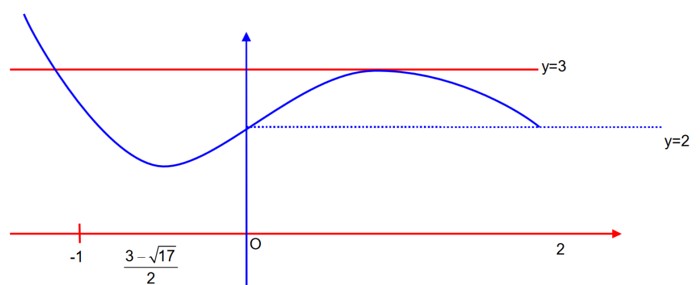Maxima and Minima
Get insights from 13 questions on Maxima and Minima, answered by students, alumni, and experts. You may also ask and answer any question you like about Maxima and Minima
Follow Ask QuestionQuestions
Discussions
Active Users
Followers
New answer posted
2 months agoContributor-Level 9
If f(x) has maximum value at x = 1 then
…….(i)
…….(ii)
From (i) and (ii) we get
New answer posted
2 months agoContributor-Level 10
OP2 = x2 = y2
y = ex, y' = ex,
slope of normal =
By hit and trial we get
New answer posted
2 months agoContributor-Level 10
CD = √ (10+x²)² – (10–x²)² = 2√10|x|
Area
= 1/2 * CD * AB = 1/2 * 2√10|x| (20–2x²)
=> 10 – x² = 2x
3x² = 10
x = k
3k² = 10
New answer posted
2 months agoContributor-Level 10
P' (x) = a (x-1) (x+1) = a (x²-1).
P (x) = ∫ P' (x) dx = a (x³/3 - x) + b.
Given P (-3) = 0 ⇒ a (-9+3) + b = 0 ⇒ b = 6a.
Given ∫ P (x)dx = 18. Assuming the integration is over a symmetric interval like [-c, c] and using the fact that a (x³/3-x) is an odd function, ∫ (a (x³/3 - x)dx = 0. Then ∫ b dx = 18. If the interval is [-1, 1], this would be b (1 - (-1) = 2b = 18, so b=9.
With b=9, we find a = b/6 = 9/6 = 3/2.
So, P (x) = 3/2 (x³/3 - x) + 9 = x³/2 - 3x/2 + 9.
The sum of all coefficients is 1/2 - 3/2 + 9 = -1 + 9 = 8.
New answer posted
2 months agoContributor-Level 10
Equation x²/5 + y²/4 = 1 then P (√5cosθ, 2sinθ)
(PQ)² = 5cos²θ + 4 (sinθ+2)² = cos²θ + 16sinθ + 20
= -sin²θ + 16sinθ + 21
= 85 - (sinθ - 8)²
∴ (PQ)²max = 85 - 49 = 36
? (sinθ - 8)² ∈
New answer posted
2 months agoContributor-Level 10
C? → C? - C?
f (θ) = | -sin²θ -1 |
| -cos²θ -1 |
| 12 -2 -2|
= 4 (cos²θ - sin²θ) = 4 (cos2θ), θ ∈ [π/4, π/2]
f (θ)max = M = 0
f (θ)min = m = -4
Related Tags
New answer posted
2 months agoContributor-Level 10
A (α, 0), B (-α, 0)
⇒ D (α, α² − 1)
Area (ABCD) = (AB) (AD)
⇒ S = (2α) (1 − α²) = 2α – 2α³
dS/dα = 2 - 6α²
= 0 ⇒ α² = 1/3
⇒ α = 1/√3
Area = 2α – 2α³ = 2/√3 - 2/ (3√3)
= 4/ (3√3)
Taking an Exam? Selecting a College?
Get authentic answers from experts, students and alumni that you won't find anywhere else
Sign Up on ShikshaOn Shiksha, get access to
- 65k Colleges
- 1.2k Exams
- 679k Reviews
- 1800k Answers

